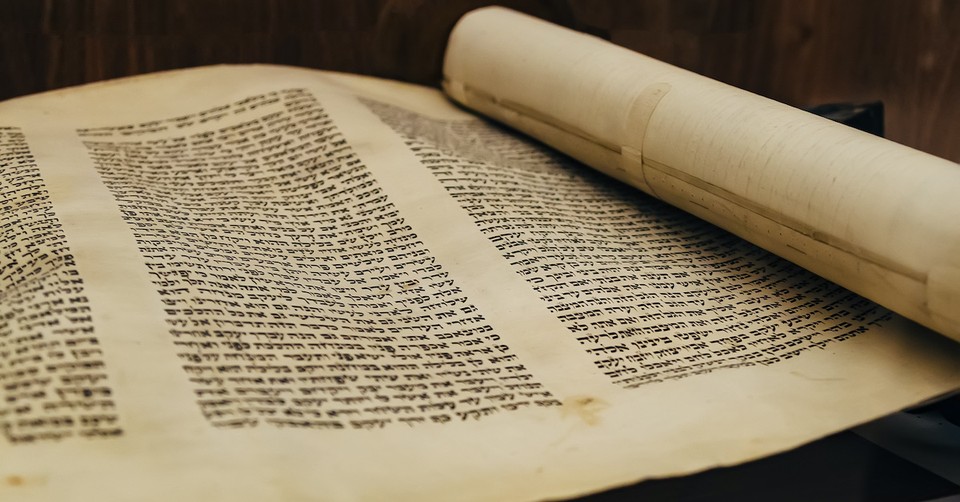What Are the Dead Sea Scrolls and Why Do Christians Make Such a Big Deal Out of Them?

We hear Bible verses quoted at church from a young age. Maybe we read the Bible with our family or do Bible devotions ourselves. Did you ever wonder about the origin of the large collection of writing in the Bible? Who wrote down the history, poetry, and Gospels in ancient times? The discovery of the Dead Sea Scrolls, first found by a teenage shepherd boy in 1947, answered many of those questions.
Finding the Dead Sea Scrolls was a profound archeological and spiritual discovery. Texts from all but one of the books of the Bible were found in Greek, Hebrew, and Aramaic languages. The material containing the scrolls was carbon dated by scientists and aged at about 2000 years old, 1000 years older than previously found copies of Scripture. The discovery of the Dead Sea Scrolls lent credence to the authenticity of the Bible.
Having copies of Scripture dating that far back in time—some recorded before the life of Jesus and closer to times of Old Testament history than earlier copies of Scripture—supports Christians’ belief that the Holy Bible is a genuine account of and set of instructions for God’s people on earth. These ancient Scriptures are a foundation of the Bible Christians use today as a guide to living the Christian life.
What Are the Dead Sea Scrolls?
Archeologists determined that a monastic community of Jewish aesthetics called the Essenes worked as scribes to record older texts in the collection known as the Dead Sea Scrolls. This group lived under a strict moral and behavioral code and worked to record the Bible texts as their mission. The Essenes lived in caves in Israel’s mountains. Scrolls with Scripture and other documents were found near the Essenes living quarters.
Joseph L. Trafton's study of the Dead Seas Scrolls determined that the Essene community was governed by rigorous entrance procedures, a detailed code of conduct, and a strict organizational hierarchy under the leadership of priests. The Essenes lived in a communal lifestyle with shared property and work. They studied the Torah and met to discuss community matters and practice ceremonies. Worship, including a sacred meal, was an important part of their lives. From archeological evidence of a great fire and Roman arrowheads and coins, it appears the Essene culture disappeared during the Jewish Revolt in 66 to 70 CE (Common Era). The Essenes were most likely vanquished by Roman forces.
A third of the material on the scrolls is biblical, with sections of every book of the Bible except Esther. There is a 24-foot-long scroll of Isaiah. Psalms and Deuteronomy are also nearly complete in the scrolls. Not coincidentally, these three books of the Bible are those most often quoted in the New Testament. The scrolls also contain thousands of smaller fragments of books of the Bible and are compiled from over 900 documents written in Hebrew, Aramaic, and Greek.
How Were the Dead Sea Scrolls Discovered?
The first Dead Sea Scrolls were discovered by a teenage, Bedouin boy tending sheep and goats near the town of Qumran on the shores of the Dead Sea. The boy left his group of shepherds to search for a lost goat. He threw a rock into a cave and heard pottery shatter. When he went into the cave, he discovered some of what would become known as the “Dead Sea Scrolls” in jars inside the cave. The archeological site of the Dead Sea Scroll is known today as Khirbet Qumran. The site was first excavated between 1951 and 1956.
Archeological digs in the Essenes’ former caves produced ten scrolls, in addition to the one found by the Bedouin shepherd, over the next nine years. This large collection of writing became known as the "Dead Sea Scrolls,” because the scrolls were found in caves a kilometer or two from the northwest shore of the Dead Sea.
Why Do the Dead Sea Scrolls Play Such a Huge Role in Supporting the Truth of the Bible?
The Dead Sea Scrolls’ documents are almost identical to those in the Masoretic Text from the Middle Ages, which scholars have used to translate the Bible. Jewish scholars completed the Masoretic text between 500 and 950 CE. Old Testament translations we currently use derive from the scribe work of these Masorete scholars. The Dead Sea Scrolls are estimated to be at least 1000 years older than the Masoretic text, however. Carbon dating of the Dead Sea Scrolls places these works of the Essene community as originating from the last two centuries BCE to the first century CE.
The Dead Sea Scrolls were meticulously copied and stored by the Essene monastic community. Since their discovery, they have been recognized by Bible scholars as to the oldest copies of the Bible available to the world. Their text validates much of the current translations’ accuracy. The Dead Sea Scrolls have also aided scholars in translating modern versions of the Bible.
Bible literature is a cornerstone of the Christian faith. The Dead Sea Scrolls make more real the Word of God. Although the existence of copies of scripture recorded close to and during actual biblical time may not change anyone’s faith, it adds a reassuring certainty to the Bible’s authenticity. The fact that the Dead Sea Scrolls were discovered in the 20th century—and have been carbon dated by scientists to have originated in the first century CE—connects our Christian world to that of the time of Jesus. The Dead Sea Scrolls have a closer reach back to the time of the Old Testament as well. Archeologists have established what Christians always believed about the Bible—that it is the true word of God.
10 Fun Facts about the Dead Sea Scrolls
1. Essenes living in caves near Qumran, Israel, copied Scripture when Jesus was alive.
2. The archeological site of the Dead Sea Scrolls, called Khirbet Qumran, is in the West Bank of Israel, and the site is managed by Israel’s Qumran Nation Park.
3. Thousands of fragments of the Dead Sea Scrolls have yet to be pieced together and read.
4. A third of Dead Sea Scrolls contain Bible Scripture; a third contain commentary, and a third contains rules and regulations for the Essene monastic community.
5. Several inkwells and plaster elements that may have been tablets were found when archeologists excavated Khirbet Qumran.
6. Section of the Dead Sea Scrolls describes ritual washing of Jewish people, which may explain how baptism emerged as a Christian church sacrament.
7. The Dead Sea Scrolls contain expectations for God’s Messiahs—one a warrior king, one a priest, and one a prophet.
8. The Dead Sea Scrolls explain the context of New Testament Scripture, especially John’s Gospel.
9. The Dead Sea Scrolls contain thirteen liturgical songs, one for each Sabbath in the first quarter of the year.
10. The Dead Sea Scrolls are owned by Israel and housed in the Shrine of the Book at the Israel Museum. Pieces of the scrolls collection occasionally travel as an exhibit. The Dead Sea Scrolls exhibit was at the Denver Museum of Nature and Science in 2018 and the Royal Ontario Museum in 2009.
The grass withers and the flowers fall, but the word of our God endures forever. Isaiah 40:8
Photo credit: ©GettyImages/VladimirZapletin

This article is part of our larger resource library of Christian questions important to the Christian faith. From core beliefs to what the Bible says about angels, we want to provide easy to read and understand articles that answer your questions about Christian living.
What Do Christians Believe?
Is Gambling a Sin?
Is Drinking Alcohol a Sin?
What Does God Look Like?
Are Guardian Angels Real?
What is Heaven Like?
Originally published June 09, 2021.







